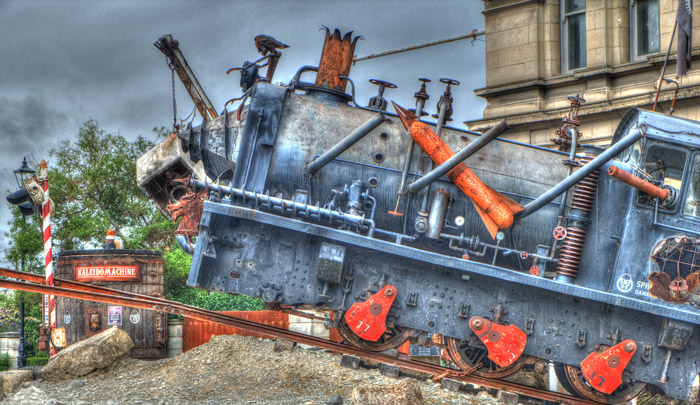Tomorrow As It Used to Be #1
Apr 28, 2014
 Three hours south of Christchurch on the east coast of New Zealand's South Island is Oamaru, one of the country's oldest cities and briefly–back in the 1870s–one of its wealthiest and fastest growing.
Three hours south of Christchurch on the east coast of New Zealand's South Island is Oamaru, one of the country's oldest cities and briefly–back in the 1870s–one of its wealthiest and fastest growing.
There was a halfway decent harbor for a port to serve the thriving agricultural region, especially after introduction of refrigerated transport for meat. High-quality limestone for building was locally plentiful. A 50-km-long aqueduct was constructed to slake the thirst of the booming little city and irrigate surrounding farmland with fresh mountain water. Industry emerged, lapping up the new water supply. The city built an opera house, an athaeneum, and a large and ornate public garden.
By the 1880s, when economic depression hit hard, Oamaru was said to be "the best built and most mortgaged town in Australasia." The aqueduct went bankrupt, the port closed, industry languished, and construction stopped for more than a hundred years.
What finally saved Oamaru was steampunk, the style of art and/or life that emerged from the punk rock era but is rooted in Victorian-era visions of a fantastic feature: think Jules Verne and H. G. Wells. Steampunk science fiction is inspired by nineteenth-century steam-powered technology and decorative arts, ratcheted up by twenty-first-century irreverence and intensity.
Oamaru's intact nineteenth-century downtown–intact because nobody since the nineteenth century had thought the place worth a dime of investment–created an ideal backdrop for steampunk festivals, steampunk artists' studios, steampunk shopping, and eventually steampunk tourism.
(Oamaru also has penguins, more of which soon. Watch this space.)
